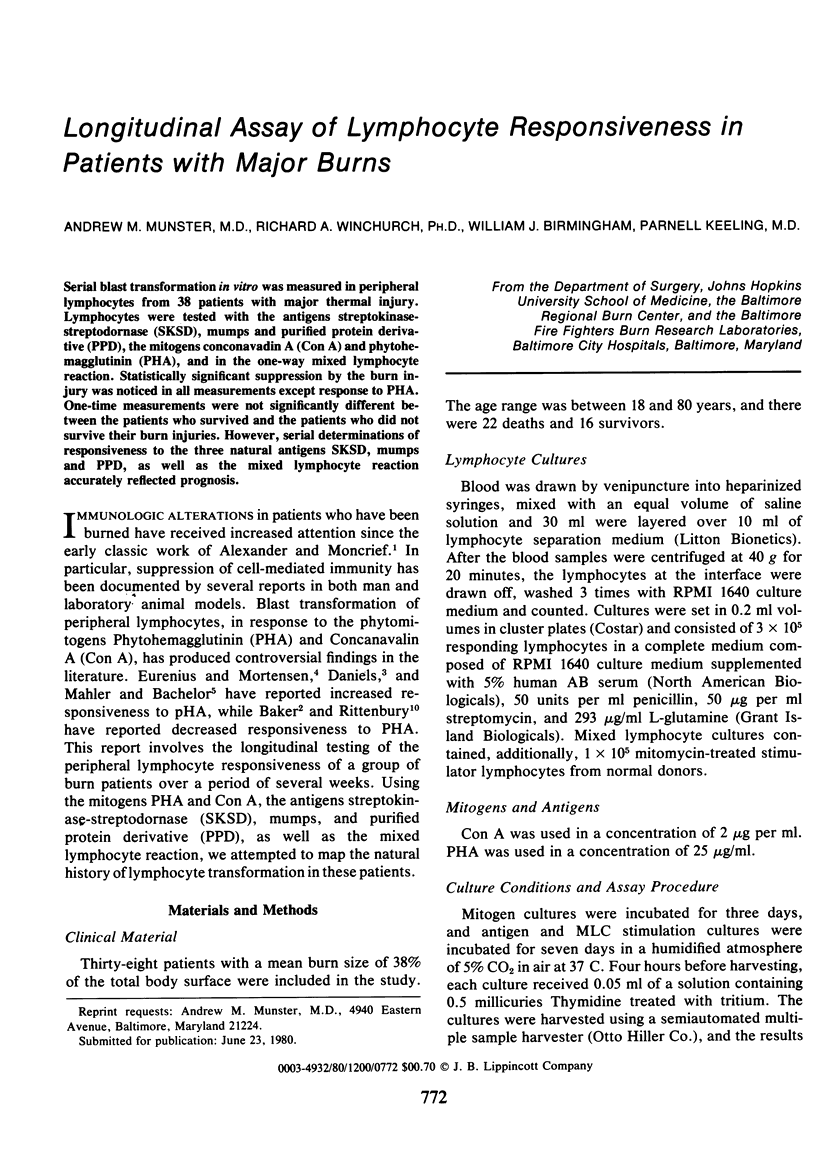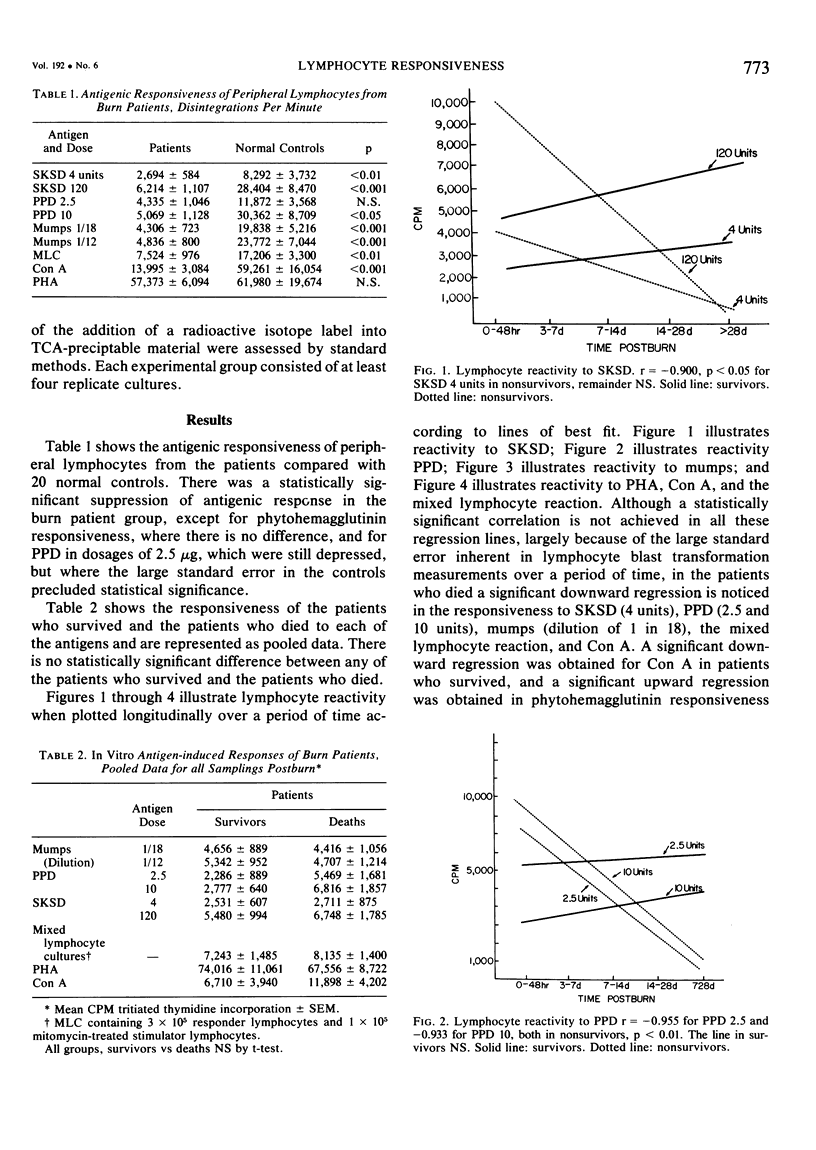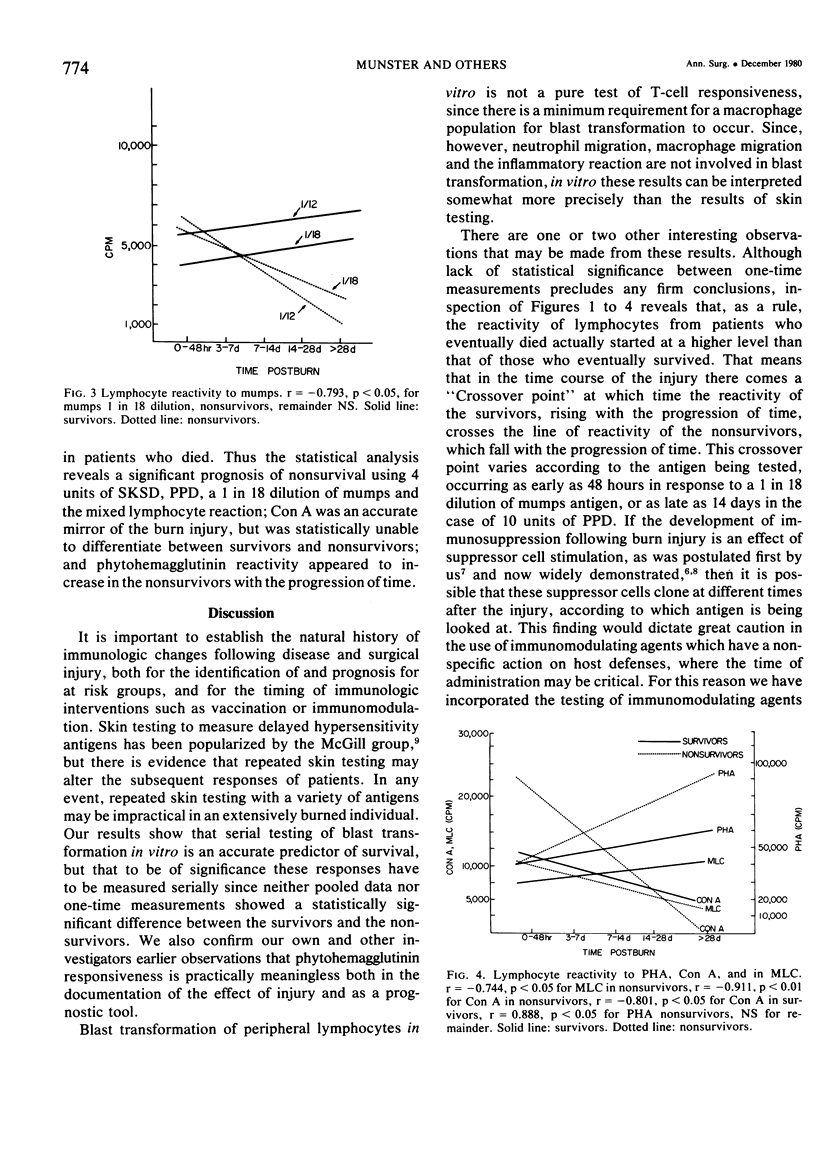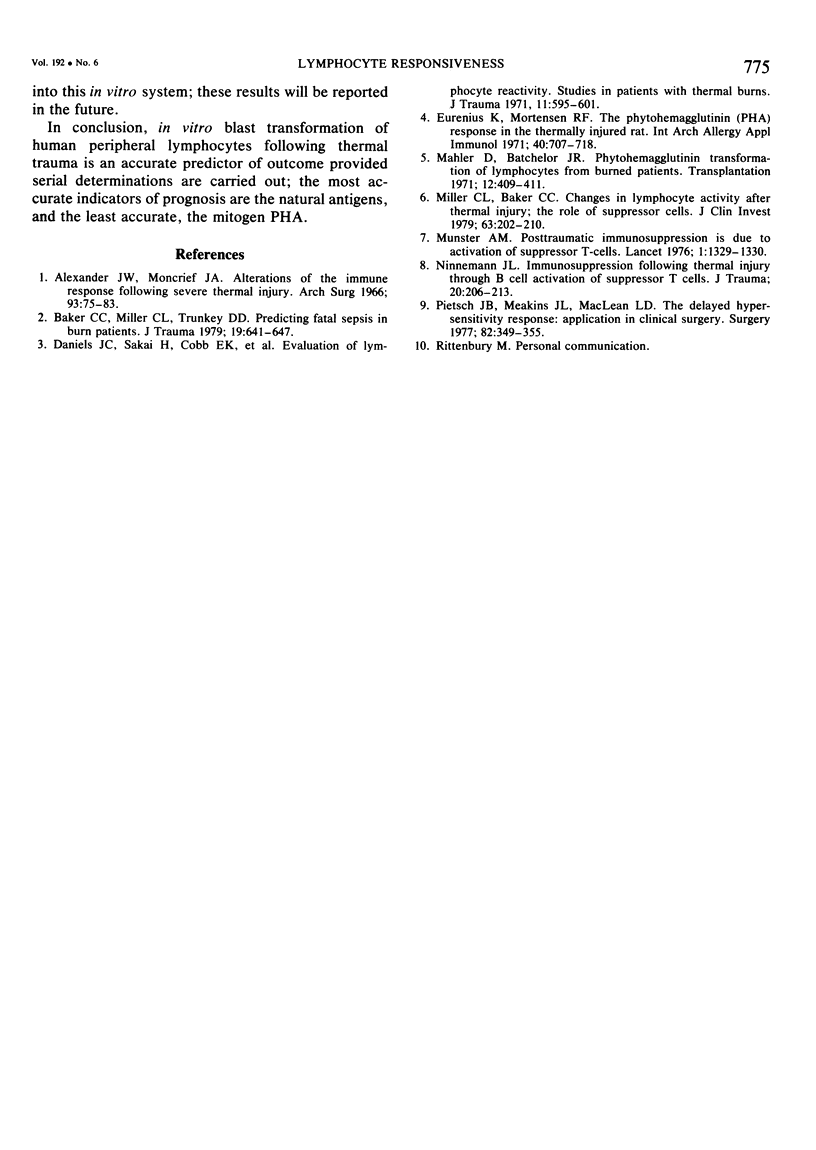Abstract
Serial blast transformation in vitro was measured in peripheral lymphocytes from 38 patients with major thermal injury. Lymphocytes were tested with the antigens streptokinase-streptodornase (SKSD), mumps and purified protein derivative (PPD), the mitogens concanavalin A (Con A) and phytohemagglutinin (PHA), and in the one-way mixed lymphocyte reaction. Statistically significant suppression by the burn injury was noticed in all measurements except response to PHA. One-time measurements were not significantly different between the patients who survived and the patients who did not survive their burn injuries. However, serial determinations of responsiveness to the three natural antigens SKSD, mumps and PPD, as well as the mixed lymphocyte reaction accurately reflected prognosis.
Full text
PDF



Selected References
These references are in PubMed. This may not be the complete list of references from this article.
- Alexander J. W., Moncrief J. A. Alterations of the immune response following severe thermal injury. Arch Surg. 1966 Jul;93(1):75–83. doi: 10.1001/archsurg.1966.01330010077011. [DOI] [PubMed] [Google Scholar]
- Baker C. C., Miller C. L., Trunkey D. D. Predicting fatal sepsis in burn patients. J Trauma. 1979 Sep;19(9):641–648. doi: 10.1097/00005373-197909000-00001. [DOI] [PubMed] [Google Scholar]
- Daniels J. C., Sakai H., Cobb E. K., Lewis S. R., Larson D. L., Ritzmann S. E. Evaluation of lymphocyte reactivity studies in patients with thermal burns. J Trauma. 1971 Jul;11(7):595–601. doi: 10.1097/00005373-197107000-00011. [DOI] [PubMed] [Google Scholar]
- Eurenius K., Mortensen R. F. The phytohemagglutinin (PHA) response in the thermally injured rat. Int Arch Allergy Appl Immunol. 1971;40(4-5):707–718. doi: 10.1159/000230453. [DOI] [PubMed] [Google Scholar]
- Mahler D., Batchelor J. R. Phytohaemagglutinin transformation of lymphocytes in burned patients. Transplantation. 1971 Nov;12(5):409–411. doi: 10.1097/00007890-197111000-00015. [DOI] [PubMed] [Google Scholar]
- Miller C. L., Baker C. C. Changes in lymphocyte activity after thermal injury. The role of suppressor cells. J Clin Invest. 1979 Feb;63(2):202–210. doi: 10.1172/JCI109290. [DOI] [PMC free article] [PubMed] [Google Scholar]
- Munster A. M. Post-traumatic immunosuppression is due to activation of suppressor T cells. Lancet. 1976 Jun 19;1(7973):1329–1330. doi: 10.1016/s0140-6736(76)92658-1. [DOI] [PubMed] [Google Scholar]
- Pietsch J. B., Meakins J. L., MacLean L. D. The delayed hypersensitivity response: application in clinical surgery. Surgery. 1977 Sep;82(3):349–355. [PubMed] [Google Scholar]


